CASE STUDY
Introduction Examples
-

Industrial Materials Group
We provide optimal proposals that meet customer needs based on the diverse properties of pile fabrics, including material, rigidity, density, and height.
-
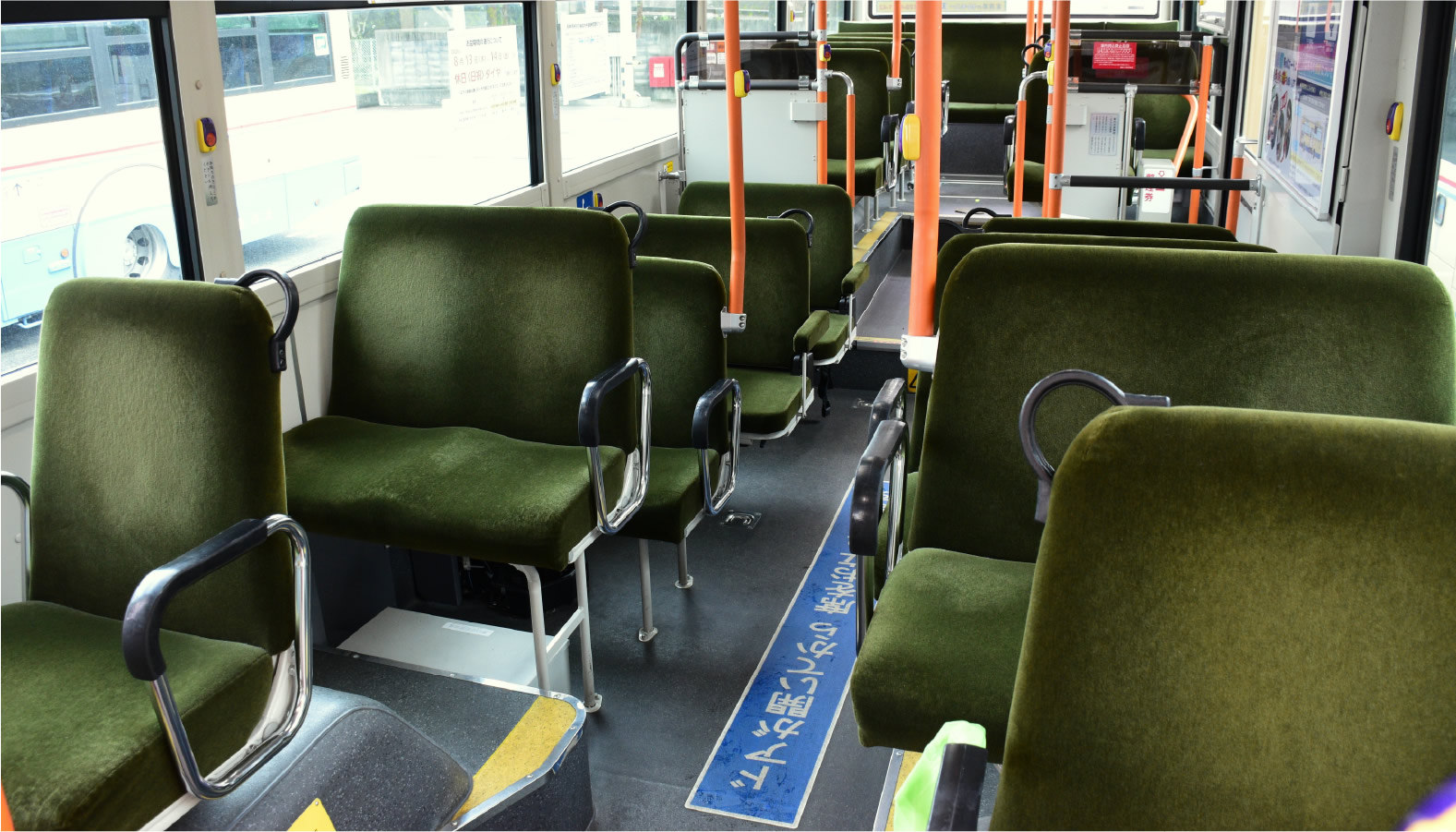
Vehicle Group
We provide seat fabrics, cushions, and other interior materials, such as curtains, to meet the specific needs of railway and bus companies.
-

Brush Group
This section covers products that have received awards and certifications from external organizations.
about each group quality control
Industrial Materials Group
Other Tests Using a Tensile Tester
1. Strength Test
Our fabrics are used in home appliances such as vacuum cleaners and air conditioners. These fabrics are tested and measured for the specific strength required for electrical appliances.
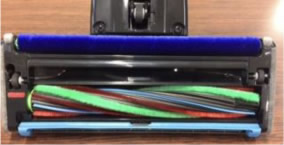

2. Test Method
Test conditions and judgment criteria are based on the requirements of each manufacturer.
① Peel Strength of Fabrics Attached with Adhesive or Double-Sided Tape
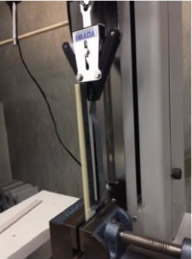
180-degree peel strength test of brush fabric attached to an ABS board with double-sided tape.
② Pile Shedding Strength
This test checks the difficulty of pile falling out from the brush fabric.

③ Holder Holding Power
This test evaluates how difficult it is for the fabric inserted into the rotating brush holder (for cleaners or air conditioners) to come off the holder.
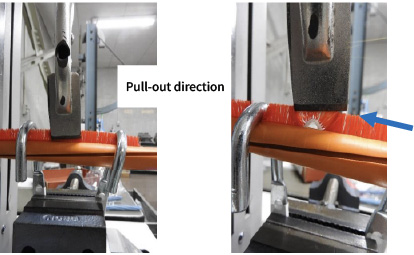
Measure the maximum strength at this point.
Vehicle Group
Abrasion Strength Test (Based on JIS L 1096 A-1 Method (Plane Method))
1. Purpose of the Test
This test aims to determine the extent to which the surface of the fabric used for seat covers in trains and buses, as well as brush products such as etiquette brushes manufactured by our company, is worn down due to friction during use.。
2. Test Method
The test begins with the abrasive paper (sandpaper) in contact with the test fabric. The mounting table is moved back and forth up to 5,000 times, and the fabric is evaluated based on the degree of wear and any changes in appearance.
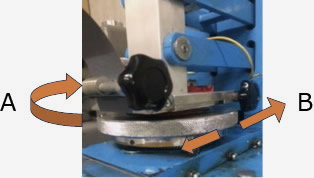
3. Judgment Examples
Passed at Level 4:

Failed at Level 2:
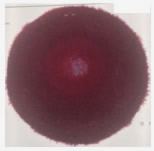
Combustion Performance Test
Using MVSS Method (Based on JIS D 1201 Flammability Test Method for Interior Materials)
1. Purpose of the Test
This test checks the flammability of interior materials such as seat fabrics, seat cushion materials, and curtains for automobiles (mainly buses) manufactured by our company.
2. Test Method
①Test Equipment
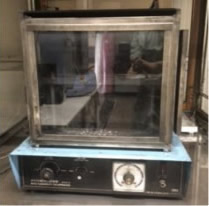
②Set the fabric on the fixture.
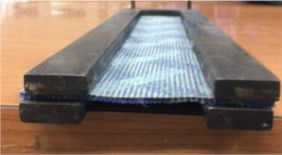
③Insert the fabric into the device.
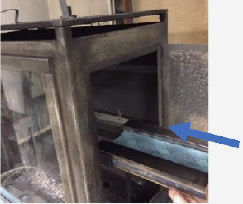
④Light the gas burner.
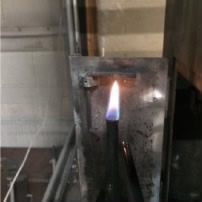
⑤Flame Height Adjustment
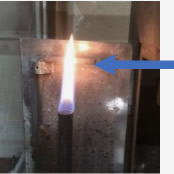
⑥Apply the flame to the fabric.
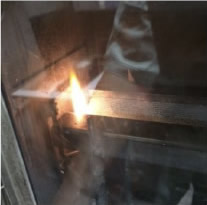
⑦Insert the fabric into the device.

⑧Measure the time with a stopwatch.

Combustion Test According to the Ship Research Method(Based on the Interpretation Standards of the Ministry of Land, Infrastructure, Transport and Tourism's Railway Bureau's "Ministerial Ordinance Establishing Technical Standards for Railways")
1. Purpose of the Test
This test aims to check the combustibility of interior materials such as seat skin fabrics, seat padding, and curtains for railway vehicles manufactured by our company.
2.Test Method
During the test, observe the relationship between the flame and smoke, and measure the time it takes for the alcohol flame to extinguish. At this time, check whether the flame on the test specimen has already gone out or is still burning.
Combustion Box
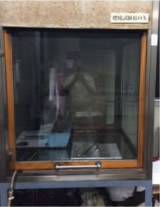
Test Table / Alcohol Table台

Alcohol Container
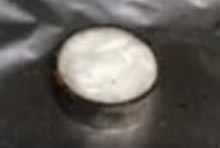
Set the test specimen.ト
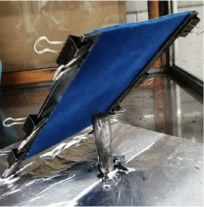
Ignite the alcohol.
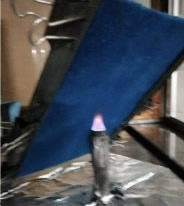
Start the ignition of the test piece.
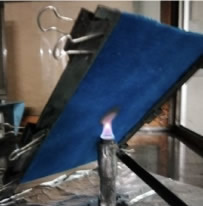
Light Fastness Test(Based on JIS L 0842 Dyeing Fastness Test Method Against Ultraviolet Carbon Arc Lamp Light)
1. Purpose of the Test
This test aims to evaluate the degree to which the seat fabrics for trains and buses manufactured by our company change color (discoloration, fading) due to the influence of ultraviolet rays from sunlight. 。
2. Test Method
Attach the 100-hour and 200-hour samples to the sample holder, set them in the testing machine (UV fade meter), and start the test.
Attached to Sample Holder:
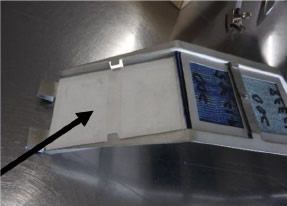
Set in Testing Machine:
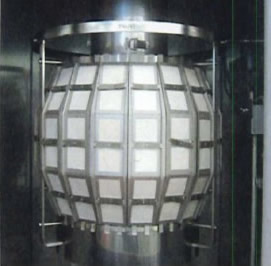
Operating status

Judgment will be made after 100 hours and 200 hours have passed. Judgments are made using JIS L 0804 "Gray Scale for Discoloration and Fading," comparing the original fabric for judgment with the tested fabric, and grading from level 1 to level 5 in 0.5 increments.
3. Judgment Examples
Passed at Level 4 (200 hours):

B:For judgment
Failed at Level 1-2 (200 hours):

B:For judgment
Brush Group
Durability Test of Brush Products
1. Purpose of the Test
We have developed our own testing equipment that simulates the conditions under which customers (general consumers) use the brush products we manufacture and sell. This test is conducted to confirm that there is no damage or deterioration that would render the product unusable after use.
2. Driving Durability Test
- Set the brush product in the "driving durability test device."
- The device travels 60 cm back and forth in 1.5 seconds per trip. The handle type will be tested for 250,000 back-and-forth cycles, while the handy type will be tested for 120,000 cycles. After each run, we will check for any damage or deterioration that would make the product unusable.
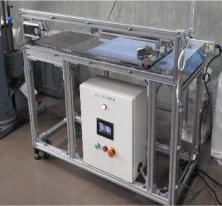
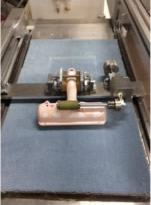
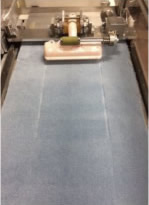
3. Opening/Closing Durability Test
This is the opening/closing durability test for the dust box of the popular "Paku Paku Roller®."
- Set the Paku Paku Roller® in the "opening/closing durability tester."
- After running the testing machine and repeating the test by opening and closing it 6,000 times, we check for any damage or deterioration that would render it unusable.Opening/Closing Durability Testing Machine
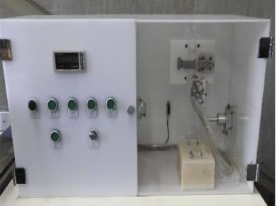

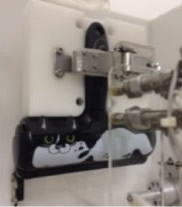
Brush products undergo various other tests as well. In the future, as we develop new products, we will continue to consider and implement testing equipment and methods suitable for those products, striving to manufacture items that satisfy our customers.
